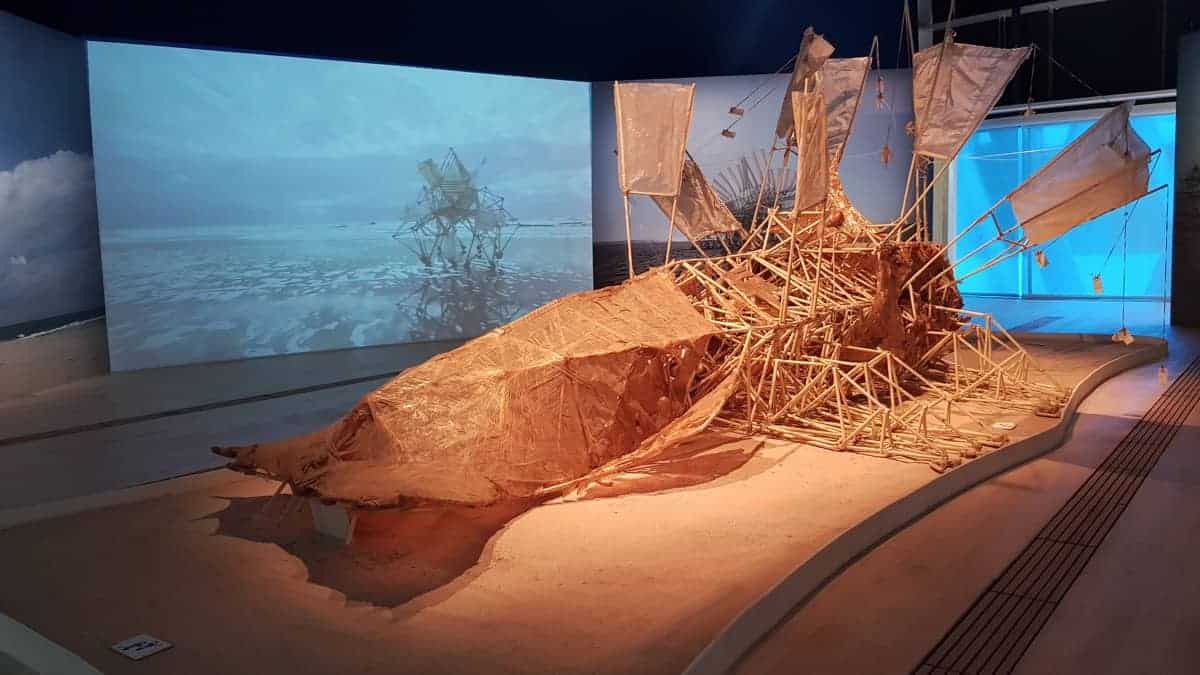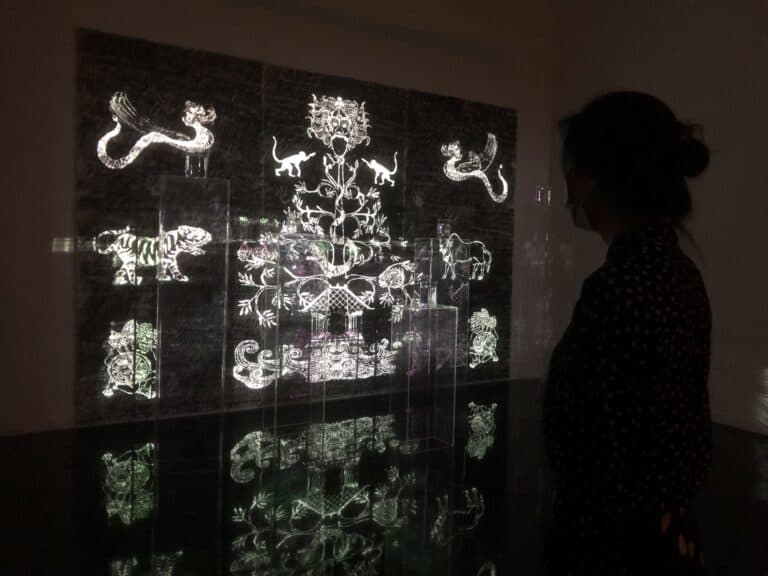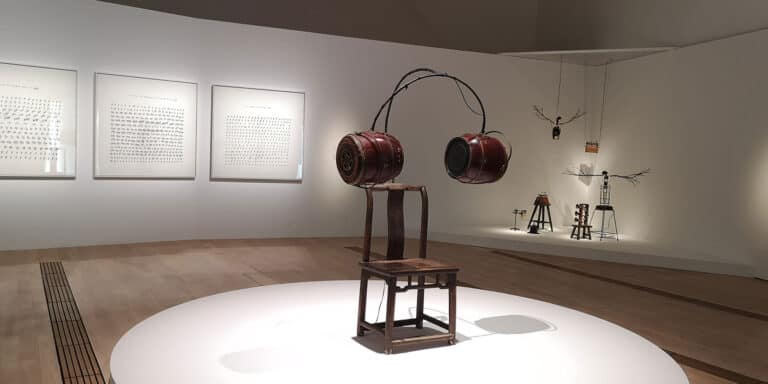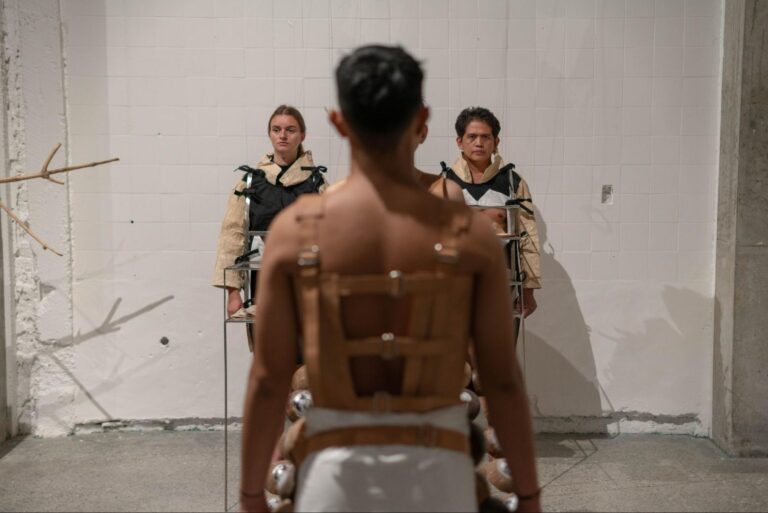As a faithful 90s kid who grew up on Disney classics, I always imagine the grizzly animated character from this well-loved film, whenever I hear the word ‘beast’:
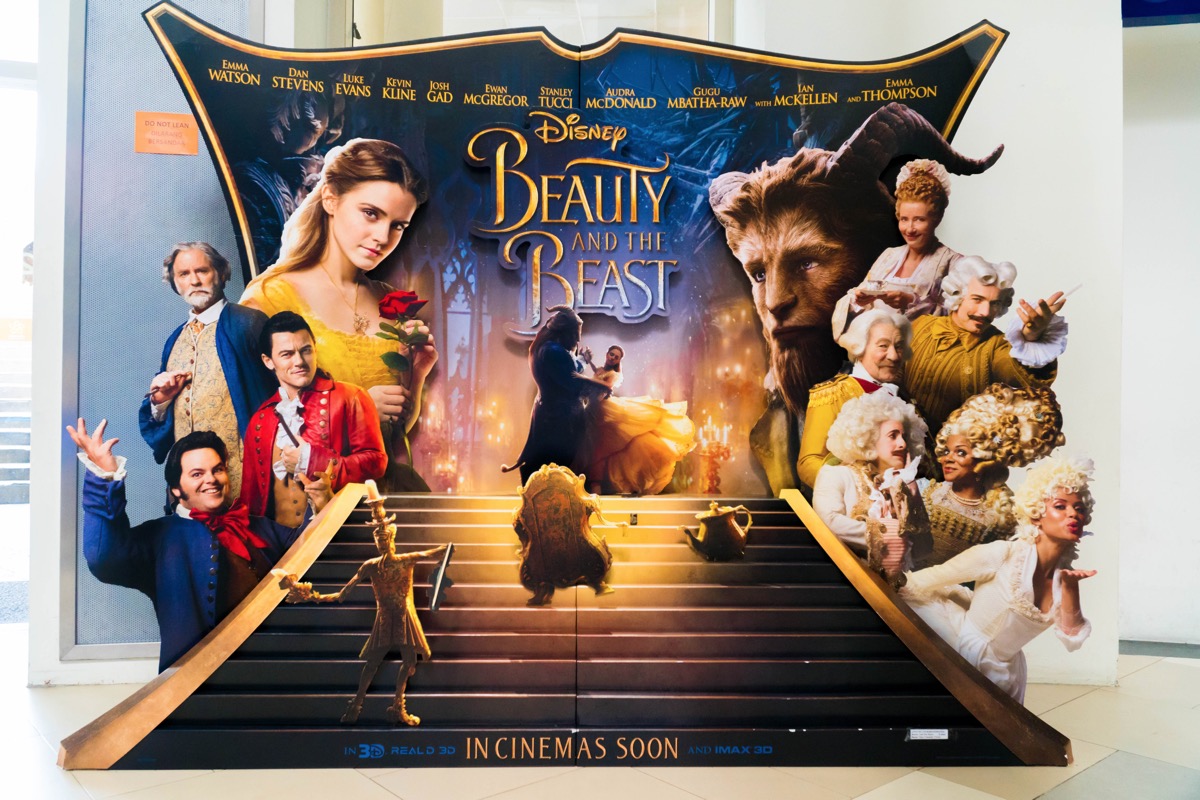
I think of a monstrous, hideous form with sabre-like fangs and a terrifying growl — of something clumsy, brutish and far from refined. A beast, indeed, is a very regretful thing to be, for who could learn to love a beast?
However, since obtaining the chance to learn about Theo Jansen’s Strandbeests, I now imagine something wildly different.
The character from the beloved Disney classic has since taken a back-seat in my mind.
Translating to ‘beach beasts’ from Dutch, Strandbeests are 3D works of art that are mobilised by natural winds. Their creator has said:
“I make skeletons that are able to walk on wind, so they don’t have to eat.”
These astounding creations are constructed almost entirely out of various forms of readymade plastic such as cable ties, bottles, adhesive tape, and yellow PVC tubes. These creatures have a strong cult following across the globe because they look like this:
Once you see a Strandbeest in person, it is impossible to forget the astonishing dexterity with which it glides across the ground as if it were autonomous, as if it were alive.
Placed in the category of kinetic sculptures, these are the work of Theo Jansen (pronounce Tay-o Yan-sen. born 1948, the Netherlands), who has dedicated over 30 years to this body of works.
Jansen describes his creations as being native to the beach in Delft, the Netherlands, which is near his hometown, workshops and studios. The Strandbeests occupy pride of place in the Wind Walkers exhibition currently on at the ArtScience Museum. The show revives 13 beasts from the ‘graveyard’ of Jansen’s creations.
Graveyard? What?
Allow me to explain.
Every winter, Jansen toils away in his workshops to create an ‘animal’ so that it is ready to be brought to the beach in the springtime. Jansen then spends the summer experimenting with his most recent Strandbeest to see how it ‘behaves and survives,’ only to declare it ‘extinct’ by the fall season. The 13 beests on display at the ArtScience Museum are from the boneyards of these extinct Strandbeests, briefly revived (reanimated?) for the benefit of exhibition visitors.
Wind Walkers features films, prints, prototypes, sketches and even a re-creation of Jansen’s workshop. The first room houses an early Strandbeest ‘carcass’ surrounded by videos of the artist at work at the beach near Delft:
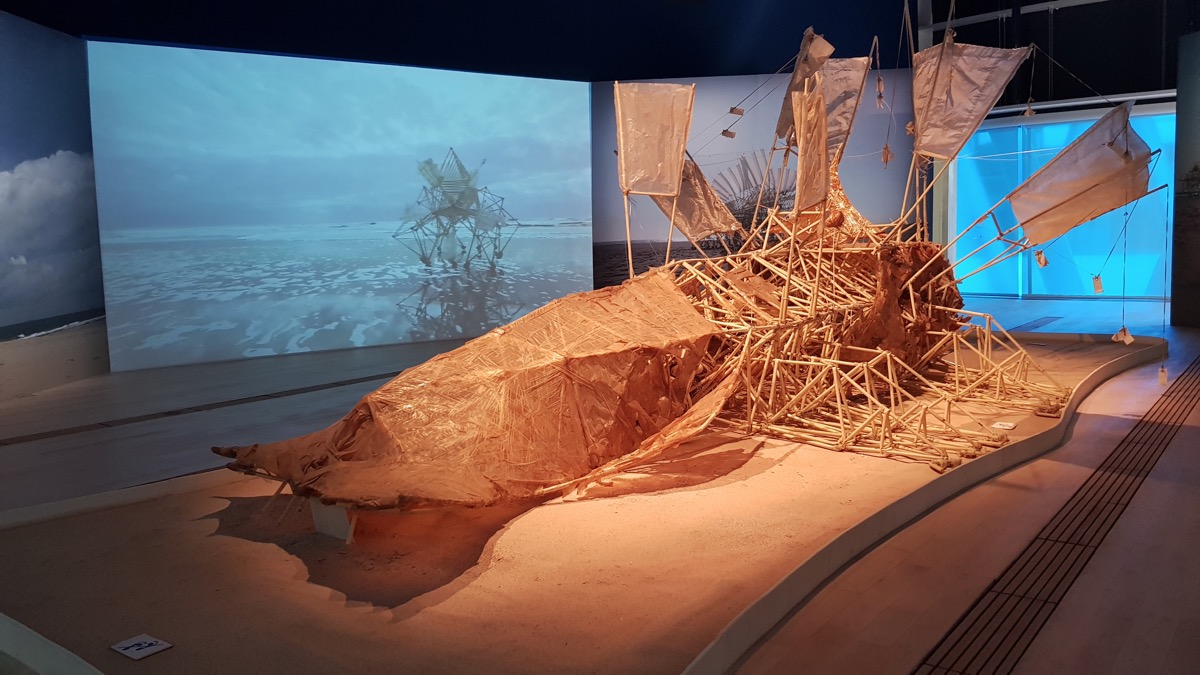
If you get a look at this sculpture in the first hall, you are likely to understand my choice of the word ‘carcass.’ The sculpture literally looks like the skeletal remains of what could have once been an actual flesh-and-blood animal. Over time it gradually fades from yellow to white, which adds to the imagined notion of the structure ‘ageing naturally’ and being reduced to its ‘bare skeleton’.
The museum team has done incredibly well with the lighting and positioning of the creature. Sand is placed underneath it in the display and the whole thing comes together like a prehistoric skeleton exhibit at a natural history museum.
What’s in a Name?
Perhaps because of his affinity to scientific practice, Jansen keeps with the tradition of naming the beests in Latin.
For example, one creature is given the Latin name Animaris Vulgaris and is from what Jansen refers to as the Gluton period. Jansen is also, in a classically comical manner, very critical of his early efforts in his artistic practice. Sand from the beach would stick to the exposed sellotape used, he explains, and weigh the animal down making the whole thing rather sloppy at best, and disabled at worst.
In the exhibition, you will also encounter beests from other eras such as the Animaris Ordis from the Cerebrum era, the Animaris Siamesis from the Suicideem era and the Animaris Bruchus Primas from the most recent Bruchum era. Interestingly, each era name indicates a characteristic of the animals within the group. For example, those from the Suicideem era tend to ‘break their own backs’ or appear as though they are destroying themselves when mobile. Improbably, their movement seems to come from a place of natural instinct rather than the bare physics associated with the interaction of non-living elements.
The Man Behind the Beests
Jansen was enrolled at Delft University of Technology for 7 years where he trained as a physicist before abandoning that path altogether to answer an inner calling to the arts. Forgoing the rest of his diploma course, he took to painting, but his days as a painter were soon to be numbered. In the 1980s, he launched a “UFO” (a sculpture made of black plastic sheets, helium and sound) above the city of Delft. On that fateful hazy day when it was quite challenging for witnesses to understand the depth, height or speed of the flying object, Jansen earned his first 15 minutes of fame.
The ostensible UFO sighting created a commotion in the media and after having such an audience for his work, Jansen was forever ruined for holding a brush to canvas.
Around the same time, he was writing a fortnightly column for the Dutch national newspaper De Volkskrant (The People’s Newspaper). His contributions were full of bold and sometimes downright ridiculous solutions or ideas. From new ways to televise football to budding designs for aircraft, Jansen penned down many fantasies that, if not for their meticulous detail and absorbing language, would lead one to assume they had been devised by a child. It was with that same childlike imagination that Jansen came up with the idea of creatures designed to create sand dunes in order to counter the rising water levels he was observing at the beach. And thus, the Strandbeests were born.
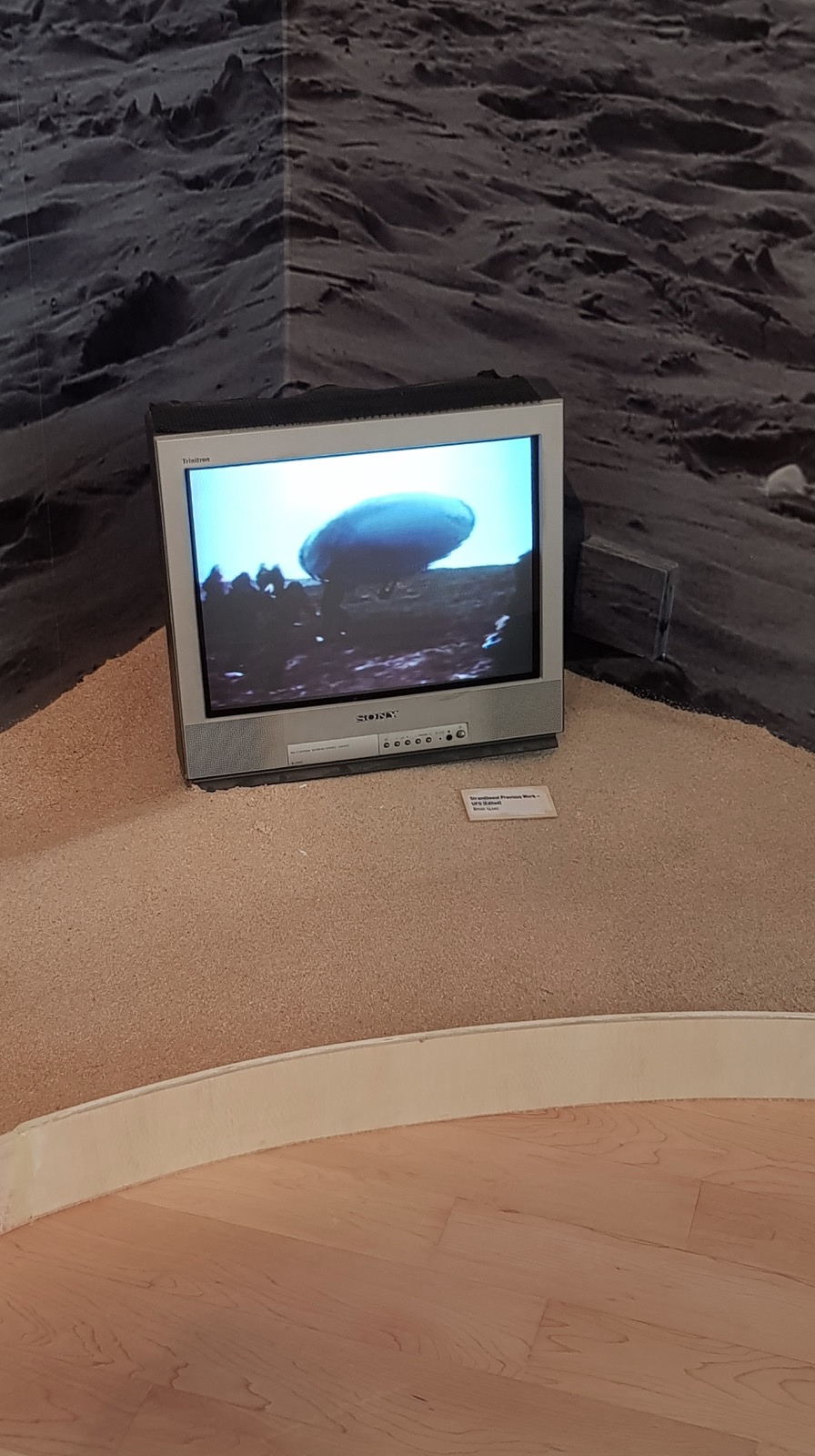
The Strandbeests had their roots in a noble and practical pursuit – to offer a solution to Jansen’s beloved homeland in respect of rising sea levels. But like all noble pursuits, Jansen’s project went through many chapters of change, including those relating to the utility or purpose of his creations. One wonders for example, how useful the whimsical Strandbeests might be in the context of today’s technologically-driven attempts to combat global warming and its effects?
Are They Really Alive?
Most other endeavours in creating robotics share something in common – they are modelled after animals or phenomena that already occur in nature. It is through either mimicry or borrowed frameworks that many inanimate creatures are ‘brought to life.’
Jansen, in contrast, has done something quite different, magicking up totally new creatures from the depths of his imagination. Through a curious alchemy of Physics, code and Mathematics, Jansen was able to devise a special ratio to determine the appropriate length of the beests’ leg segments. Going one step further, he then shared his algorithm publicly online so that anyone would be able to create a Strandbeest in their own corner of the world. If the technical aspects of his craft are of interest, you can explore a re-creation of Jansen’s atelier in the Netherlands in the third hall of the exhibition.
If you are lucky enough, you may be able to catch the animals scuffling across the museum floor with the aid of gas pumps to simulate the strong winds back in their native beach setting.
Peppering his speech with technical jargon, Jansen tells us of the friction in the beests’ joints, how they are hinged, why they are mechanistically nothing like animals in nature, about countering the forces to maintain their shapes- -all the things you might hear from a young boy about his favourite toy.
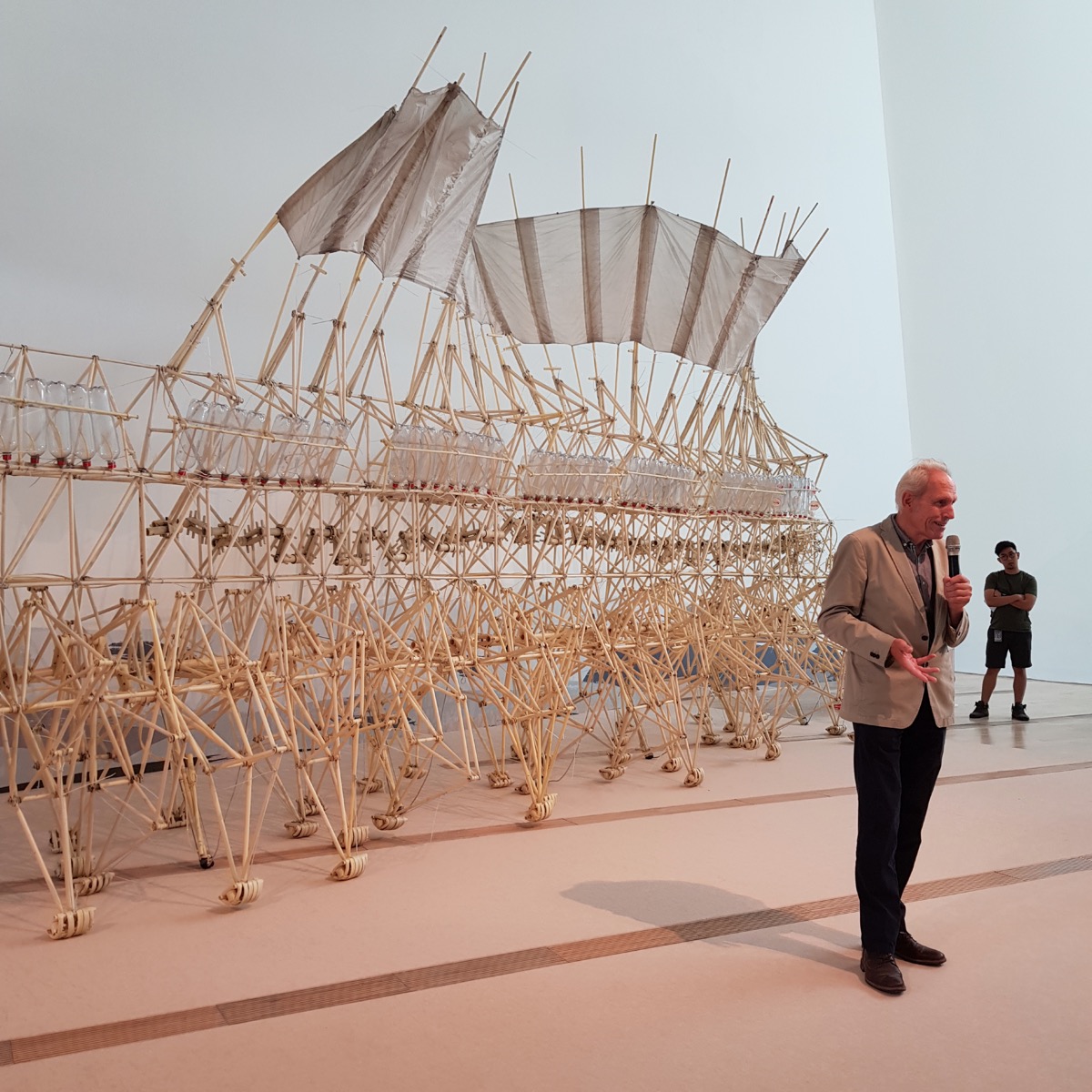
But then Jansen does something quite different in the same breath — he endeavours to convince you that the beests are just as alive as the rest of us.
Jansen does not flinch when probed about how these beests could belong in the animal kingdom. Deeply influenced by Richard Dawkins, Jansen speaks of memes as being just as valid as genes.
Nope, not the memes your friends tag you in.
Just as genes are passed on and multiply through generations of reproductions, memes are actually ideas of the mind that multiply through our brain. First coined by Dawkins, the term has unfortunately been drowned out by the meaning it has come to acquire in popular culture. The Strandbeests have been reproduced in licensed and unlicensed renditions by thousands of people across the world, which their creator argues offers support to the notion of memes as theorised by Dawkins. You can, in fact, own your own Strandbeest through the official website or here.
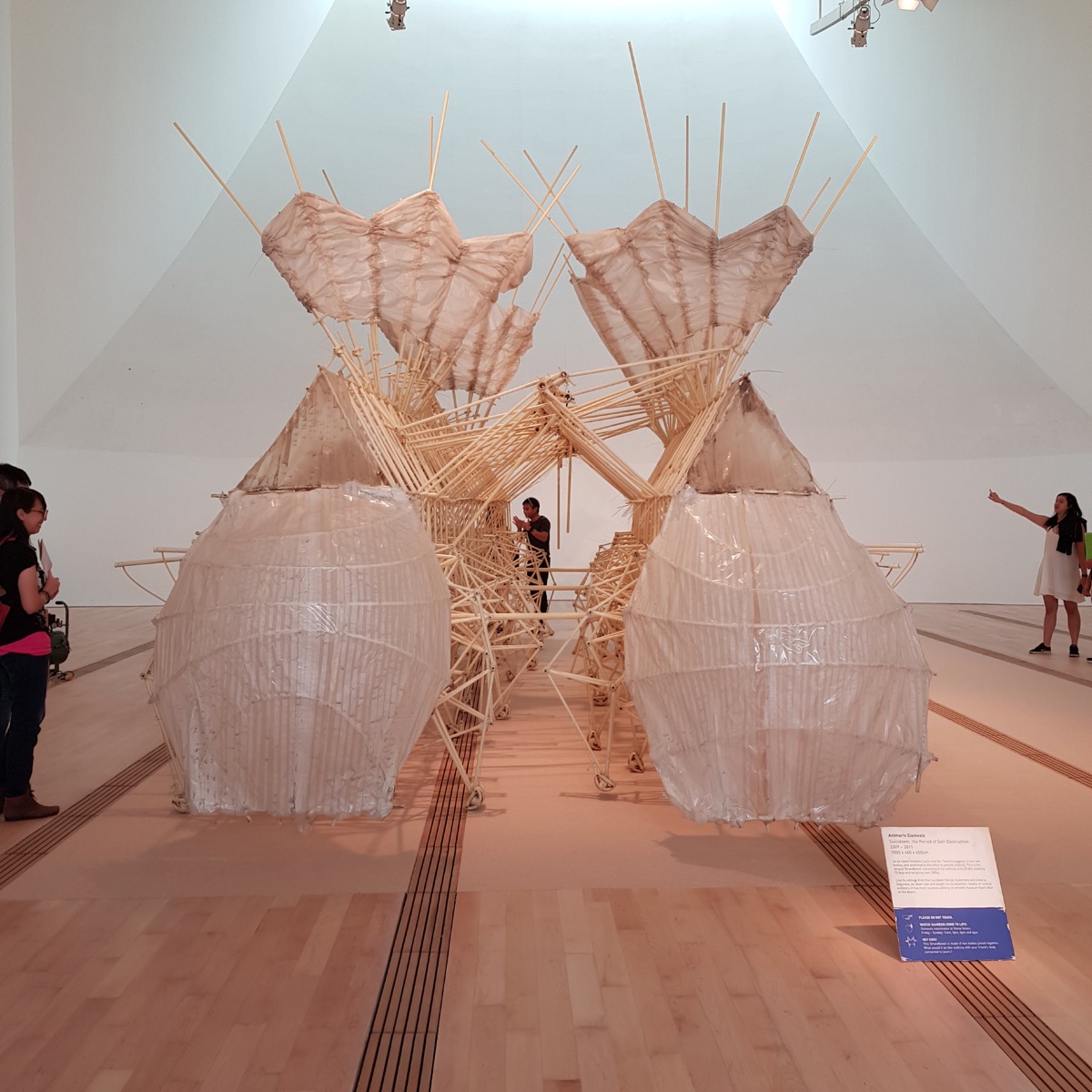
When Art Meets Science
The collaboration between artist and institution for the Wind Walkers exhibition feels both instinctive and well-timed. Honor Harger, Executive Director of the ArtScience Museum, shared that 7 years ago when the museum was introducing itself to the world, Theo Jansen featured in a video to capture the ethos of the interdisciplinary space that is the ArtScience Museum. After years of building a reputation for pushing the boundaries of art and science in their programming, it is fitting that the museum would now play host to Jansen’s first Southeast Asian exhibition. Jansen’s CV is itself a multidisciplinary extravaganza, even including a mention of his involvement in NASA brainstorming sessions in 2016 on missions to Venus.
It, therefore, comes as no surprise that Jansen is known for coining the phrase
‘The walls between art and engineering exist only in our mind,’
I overheard visitors at the exhibition giggling about how Jansen is nothing less than a madman for the way he treats his creations as having actual life and a force of their own. Jansen too openly refers to Strandbeests as a species and goes so as far as to proclaim:
‘They use humanity to reproduce’.
My view?
If anyone who produces something as innovative and incredibly interdisciplinary as the Strandbeests is to be labelled a madman, then madness is surely something to be celebrated.
Wind Walkers: Theo Jansen’s Strandbeestsis on at the ArtScience Museum from 23 June – 30 September 2018
